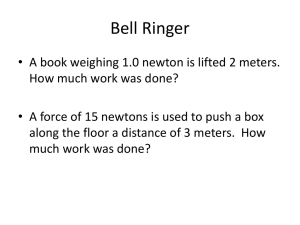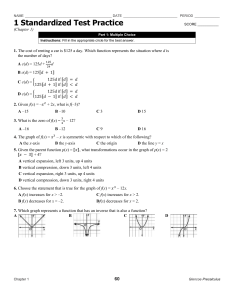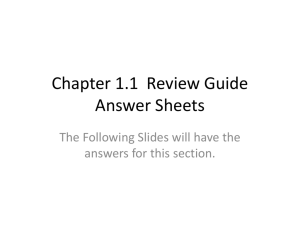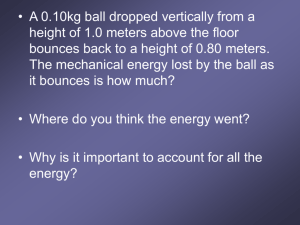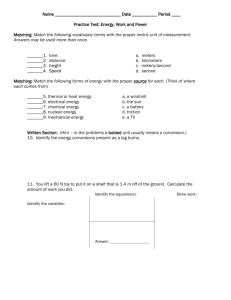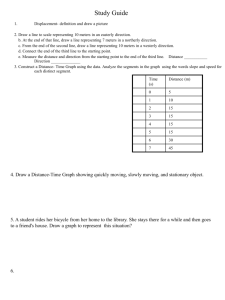PES 1110 General Physics I
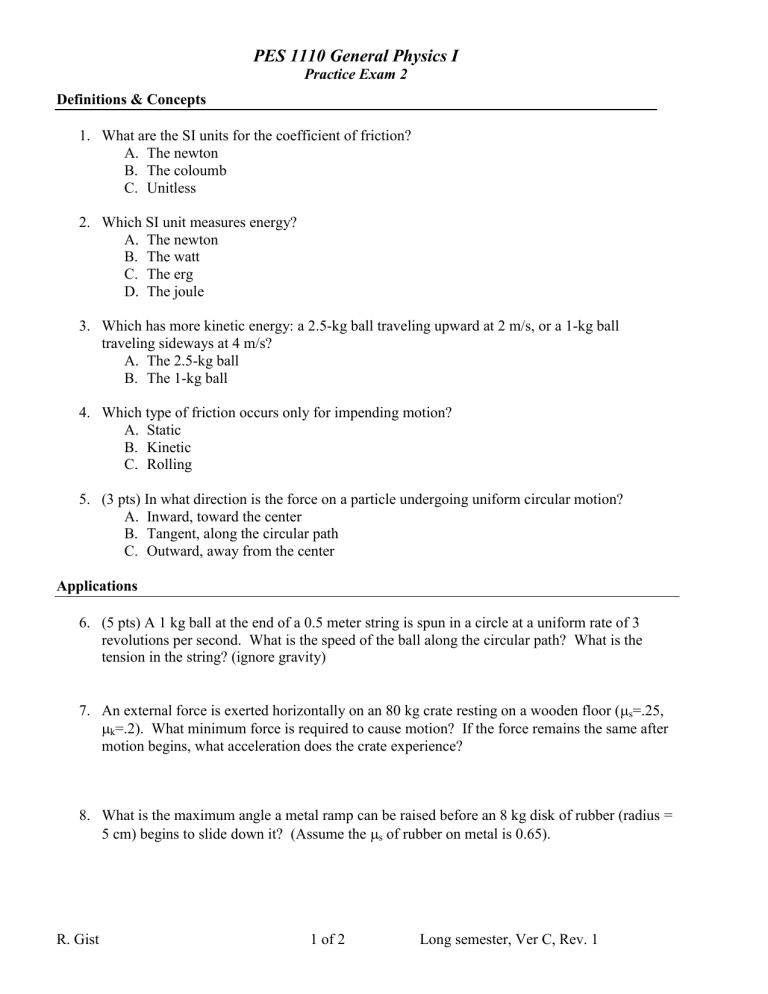
PES 1110 General Physics I
Practice Exam 2
Definitions & Concepts
1.
What are the SI units for the coefficient of friction?
A.
The newton
B.
The coloumb
C.
Unitless
2.
Which SI unit measures energy?
A.
The newton
B.
The watt
C.
The erg
D.
The joule
3.
Which has more kinetic energy: a 2.5-kg ball traveling upward at 2 m/s, or a 1-kg ball traveling sideways at 4 m/s?
A.
The 2.5-kg ball
B.
The 1-kg ball
4.
Which type of friction occurs only for impending motion?
A.
Static
B.
Kinetic
C.
Rolling
5.
(3 pts) In what direction is the force on a particle undergoing uniform circular motion?
A.
Inward, toward the center
B.
Tangent, along the circular path
C.
Outward, away from the center
Applications
6.
(5 pts) A 1 kg ball at the end of a 0.5 meter string is spun in a circle at a uniform rate of 3 revolutions per second. What is the speed of the ball along the circular path? What is the tension in the string? (ignore gravity)
7.
An external force is exerted horizontally on an 80 kg crate resting on a wooden floor (
k s
=.25,
=.2). What minimum force is required to cause motion? If the force remains the same after motion begins, what acceleration does the crate experience?
8.
What is the maximum angle a metal ramp can be raised before an 8 kg disk of rubber (radius =
5 cm) begins to slide down it? (Assume the
s
of rubber on metal is 0.65).
R. Gist 1 of 2 Long semester, Ver C, Rev. 1
PES 1110 General Physics I
Practice Exam 2
9.
What is the apparent weight of a 60 kg man in a car accelerating at 5m/s
2
down a straight, horizontal road?
10.
Find the terminal velocity of a falling brick of mass 5 kg and ballistic coefficient of 0.1 N s
2
/m
2
. Assume that the drag force is proportional to speed squared.
11.
A pick-up truck exerts a constant horizontal force of 3000 N while dragging a 300 kg log 20 meters from rest. Assume a coefficient of kinetic friction of 0.8 between the log and the ground.
A.
What work is done by the force of the truck?
B.
What work is done by gravity?
C.
What work is done by friction?
D.
What is the speed of the log at the end of the 20 meters?
12.
A force is exerted on a particle. How much of the force
F
( 10 i
ˆ
20
ˆ j ) N is in the direction of 3/5 i
ˆ - 4/5 ˆ j ? If the particle moves 2 meters in that direction, what work is done by the force?
13.
How much power is required to lift a 1200 kg piano upward at a constant speed of 2 m/s? If a motor delivers this power with an efficiency of 0.3, how much power must be supplied to the motor? How much work is done on the piano after lifting it 4 meters?
14.
The potential function for a particular dynamic system is given as U(x)=2x 3 +3x 2 -36x+8 , where U is in joules and x is in meters. Find the equilibrium points of this system, and state if they are stable, unstable, or neutral.
15.
A roller coaster car begins with a speed of 10 m/s at the top of a 10 meter section of track inclined at 45 degrees. Assuming frictionless and drag-free motion down the incline, what is its speed at the bottom?
16.
How much potential energy is stored in a spring with a spring constant 100 N/m that is compressed 0.2 meters from its unstretched length? How much more must the spring be compressed to double this energy?
R. Gist 2 of 2 Long semester, Ver C, Rev. 1
